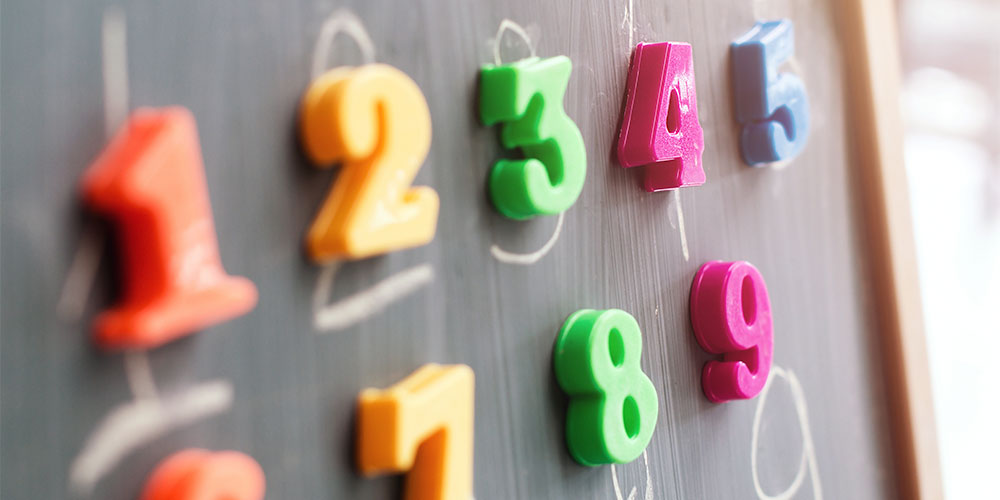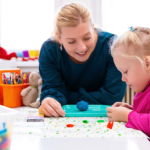Though the prescriptions for math anxiety are multifaceted and must be adaptable for various learners, the solution almost always hinges on finding a way to make the subject relevant for students. In practical terms, this means showing students how math is relevant for their lives and how it connects across the elementary curriculum.
No matter what subjects you teach, you’ve probably (ahem, definitely) drawn these connections before. But what happens when the inspiration well runs dry? Not to worry; we’ve curated a few classroom activity ideas for blending math into other elementary curricula.
Connecting Math with Social Studies
Teachers can connect math with cultural events, natural disasters, or any happenings that positively or negatively impact the world.
As social studies focuses on significant events—some of which took place in the recent past—teachers can splice in math to illustrate the details. For example, when the BP oil spill ravaged the Gulf of Mexico, we saw images and heard commentary on the tragedy. But how many people, especially youngsters, know the magnitude of what happened?
Not everyone knows that 205.8 million gallons of oil and 225,000 tons of methane contaminated those waters. Moreover, it’s not exactly common knowledge that only 25% of that toxic material was ever recovered. How many math problems can come out of that? And how will learning about the surrounding events make a significant difference in how your students understand the material from both disciplines?
Connecting Math with Science
Teachers can use math to explain and predict outcomes from various science experiments.
Yeah, the math and science marriage is likely the most common and widely accepted curricular connection. There are two reasons for this. For one, scientists use various mathematical disciplines to analyze data. Second, math provides the logic and reasoning behind various scientific phenomena.
If we’re being honest, that might be a wee bit advanced for the average elementary school student. However, the principles remain the same.
No doubt the connection will be most impactful when used in the context of science experiments. If you’ve built a marshmallow catapult with your students (and we highly suggest you do), how far will that sugary puffball fly? What factors influence the distance it travels?
Other science experiments provide opportunities to study measurement and volume. In other words, from practical applications to making well-informed predictions, math stands as a central pillar in science education.
Connecting Math with ELA
Teachers can use books to create word problems that help students better understand the story’s content while simultaneously improving their math skills.
Many students think of math and ELA as diametric camps. You’re either a words person or a numbers person. And while there can be some truth behind which competencies we’re naturally drawn to, students who dismiss their ability to grow in a discipline often enjoy it less.
Here’s how you can bypass this academic gang war. Understanding and engaging with text means questioning, predicting, summarizing, and inferring. At the same time, understanding numbers also demands that students implement those exact four competencies. This is especially true when it comes to word problems.
For example, in Esphyr Slobodkina’s children’s book Caps for Sale, a hat peddler takes a nap against a tree, but when he awakens, he discovers that a troop of monkeys has stolen his inventory. The headwear consists of blue, red, yellow, and gray caps. Which means that kids can ascertain how many monkeys have stolen each color. Or to make things more challenging, you could posit questions like, if each primate takes three hats, how many of them would it take to steal the entire collection?
Connecting Math with Physical Education
Teachers can use math problems as a key to advancement in PE games.
Physical education is such a central tenet in a quality education. After all, this subject embodies everything we hold sacred about the play-to-learn model. To that extent, games that happen in the gymnasium serve more than one person. Physical fitness is part of the puzzle, but students are also learning about physiology and improving their mental health.
That said, just how are PE teachers expected to integrate math into their curriculum? A few years back, we illustrated how to teach history with PE games. Luckily, connecting math with physical education fits into the same pedagogical model. No matter what game you’ve planned, chances are that it involves moving from one goal to another. What happens if math becomes a gatekeeper between your students and the next step?
Connecting Math with Social–Emotional Learning
Teachers can use an SEL framework as a methodology for completing math work.
No matter the subject at hand, social–emotional learning is a core element, even in math disciplines. Of course, SEL means managing emotions, communicating, listening, learning from mistakes, and making choices that lift others up. On the flip side, math means navigating outcomes, eliminating barriers, asking questions, and using failure as an opportunity for growth.
In this way, math and SEL are practical siblings.
The Collaborative for Academic, Social, and Emotional Learning breaks SEL down to five tenets: self-awareness, self-management, social awareness, relationship skills, and responsible decision-making. Luckily for us educators, those principles also apply to the way we tackle math problems. The way we see it, your kids can complete their work using a version of the five SEL disciplines.
- Students must learn their strengths and weaknesses. This version of self-awareness is hardwired into math curriculum. This discipline is especially pertinent if teachers frame shortcomings as opportunities for learning.
- Students must hold themselves accountable for their own growth. As the teacher, you can only do so much convincing. Even for younger students, self-management is an integral component of their development.
- Students must understand when to ask for help. It could be working in groups or communicating with their teacher. This version of social awareness means finding resources in others who are more than happy to supply them.
- Students must grasp the concept that problem solving means finding how variables function with one another. Even though we’re talking about numbers, and not people, that’s relationship skills in a nutshell.
- Students must use step-based logic to arrive at the right conclusion. Responsible decision-making means making the most logical choice.






